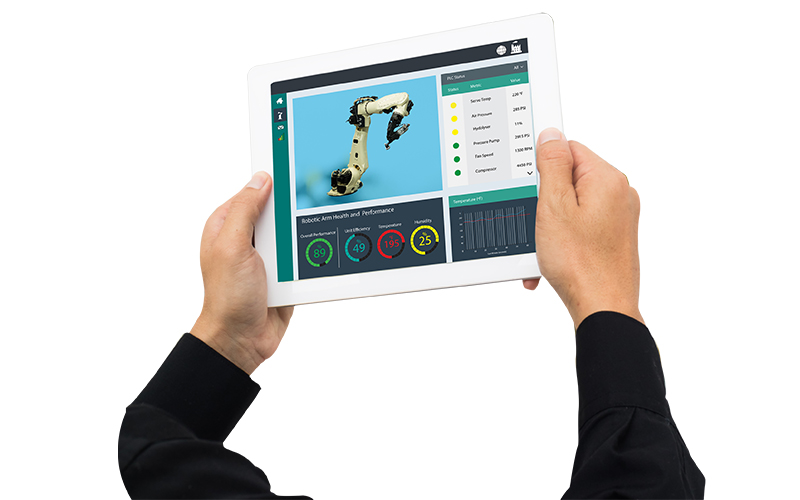BUSINESS TRANSFORMATION
Why is the cloud causing a revolution in IT infrastructure?
The above statement is a concise summary of the concept of the cloud. When something is in the cloud, it is stored on a remote server (not on the local computer) and accessible from anywhere. In essence, the cloud is a network of computers that can be accessed by any number of users worldwide, via the internet. It gets its name because the icons of networked computers resemble the billows of clouds.
Cloud computing is much talked about today, however, the foundation for the technology was laid in the 1960s. Back then, government scientists and researchers in the USA used a computer network to share information.
In the 1990s, a thought occurred: What if the network is used to share more than just information? What if applications and services are made accessible on the web with a download link? At that time, these resources were distributed physically, using floppy disks and CDs.
Salesforce, an American software company, was the first to act on this thought. It released its Customer Relationship Management (CRM) solution online in 1999 which was the first software application made available on the cloud and the first Software-as-a-service (SaaS) cloud service model.
Amazon Web Services - Pioneering cloud infrastructure services
The next breakthrough came in 2003, when Amazon released Amazon Web Services (AWS) internally. AWS was a shared infrastructure service that developers could use without having to reinvent the wheel for every project, each time (each project was building its own database and storage components, when these could easily be shared by all).
With time, AWS had become highly reliable, scalable, and cost-effective. This encouraged Amazon to release AWS to the public in 2006. This was the first Infrastructure-as-a-service (IaaS) cloud computing service type released to the public. Amazon also came up with a novel payment model: pay-as-you-use.
I am sure that by now, you would have deduced that cloud computing services come in different flavours. Some of the common types are:
- Software as a service (SaaS):
- Platform as a service (PaaS):
- Infrastructure as a service (IaaS):
offers a subscription-based online software access
provides the complete cloud platform (hardware, software and infrastructure) for developing, maintaining and testing applications
delivers on-demand compute, network and storage resources on a pay-as-you-go basis
The IaaS uprising
AWS became a massive success. This encouraged other companies to follow suit and create their own cloud environments. Microsoft Azure and Google Cloud are two of the most notable. Today, the cloud has become a sought-after technology, owing to its ability to offer solutions to some of these challenges that organisations face:
- All companies, big or small, need agile* IT infrastructure. More complex the infrastructure requirement, the more expensive and labour intensive it is. However, not all businesses can afford the space or the costs.
- Furthermore, until recently, working from home wasn’t really an option. Employees had to be on location to be able to carry out their tasks efficiently since all the necessary resources were housed in a physical office. When the Covid-19 pandemic struck, telecommuting was the only option for employees.
The cloud addressed more than the challenges listed above. It has been a boon, especially for start-ups, which had to invest huge capital in hardware set-up and software licences. Not only has the cloud simplified the initial infrastructure struggle, but it has also enabled unprecedented computing power for enterprises.
Naturally, cloud infrastructure has many benefits for enterprises. The following are a few of them:
- It saves the cost of investing in expensive hardware.
- It eliminates the complexity of maintaining infrastructure.
- You pay only for the infrastructure components that you use, and only for the duration you need them.
- The cloud service provider manages the infrastructure.
Enabling innovative applications
IaaS can be a game-changer for businesses. Today, IT architecture has become a complex environment. The infrastructure, operations and the skills needed to support this complex environment are not able to keep pace with the changing business requirements.
This is why organisations are accelerating cloud technology adaptation. It is available round the clock, is sophisticated and scalable. Also, cloud technology has grown to include a wide variety of services across a multitude of technology categories. In the field of vehicular transportation, use of the cloud’s infrastructure facilitated innovations such as Advanced Driver Assistance Systems (ADAS), where the inclusion of safety features that help vehicle drivers has proven to be extremely useful.
Another example is Netflix. Its massive library lives on AWS which supports over 100 distinct services and thousands of businesses. The cloud holds the potential to deliver multiple unexplored innovations. It’s not an exaggeration to say that just about any business-critical task can be performed on the cloud. It will be interesting to see how organisations use cloud infrastructure to expand.
*For organizations on the digital transformation journey, agility is key in responding to a rapidly changing technology and business landscape. Now more than ever, it is crucial to deliver and exceed on organizational expectations with a robust digital mindset backed by innovation. Enabling businesses to sense, learn, respond, and evolve like a living organism, will be imperative for business excellence going forward. A comprehensive, yet modular suite of services is doing exactly that. Equipping organizations with intuitive decision-making automatically at scale, actionable insights based on real-time solutions, anytime/anywhere experience, and in-depth data visibility across functions leading to hyper-productivity, Live Enterprise is building connected organizations that are innovating collaboratively for the future.






